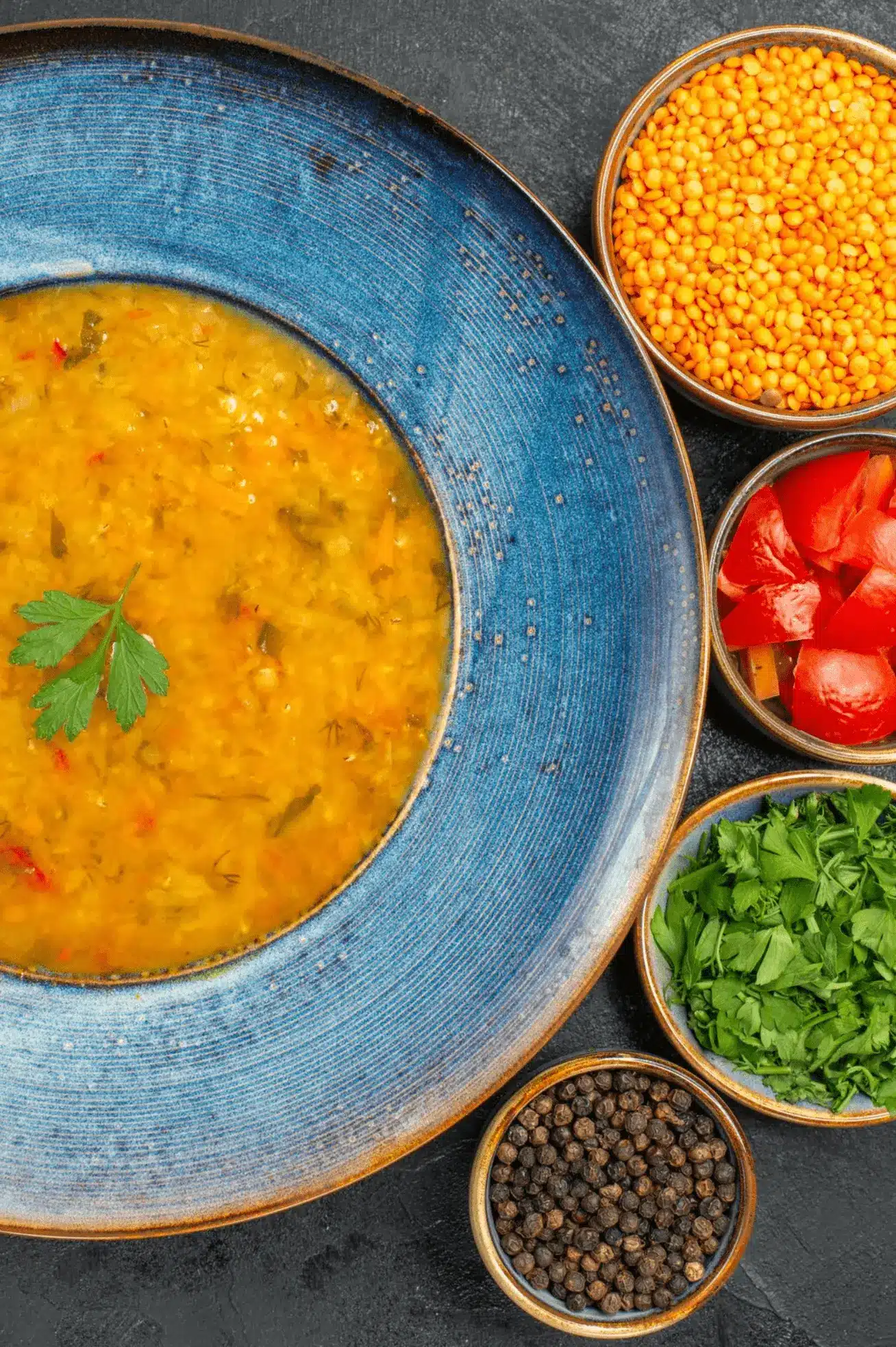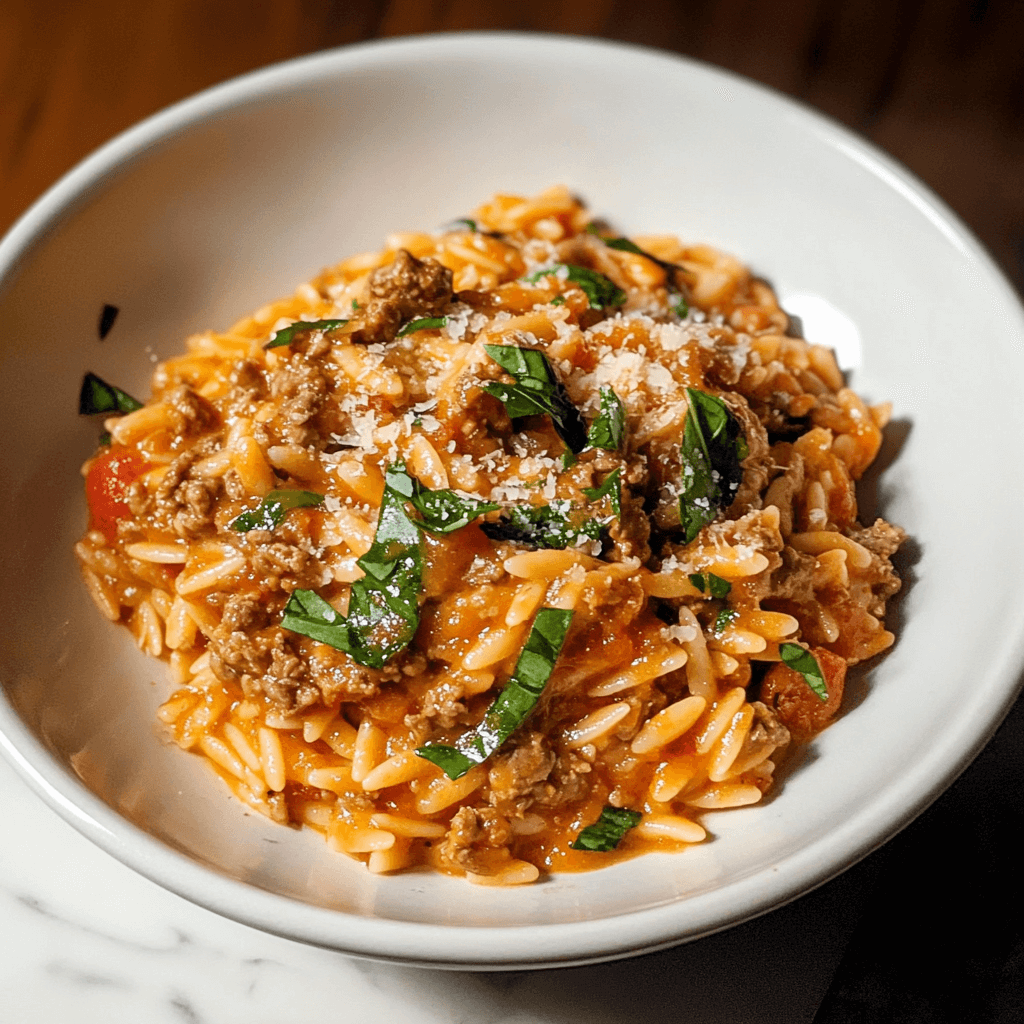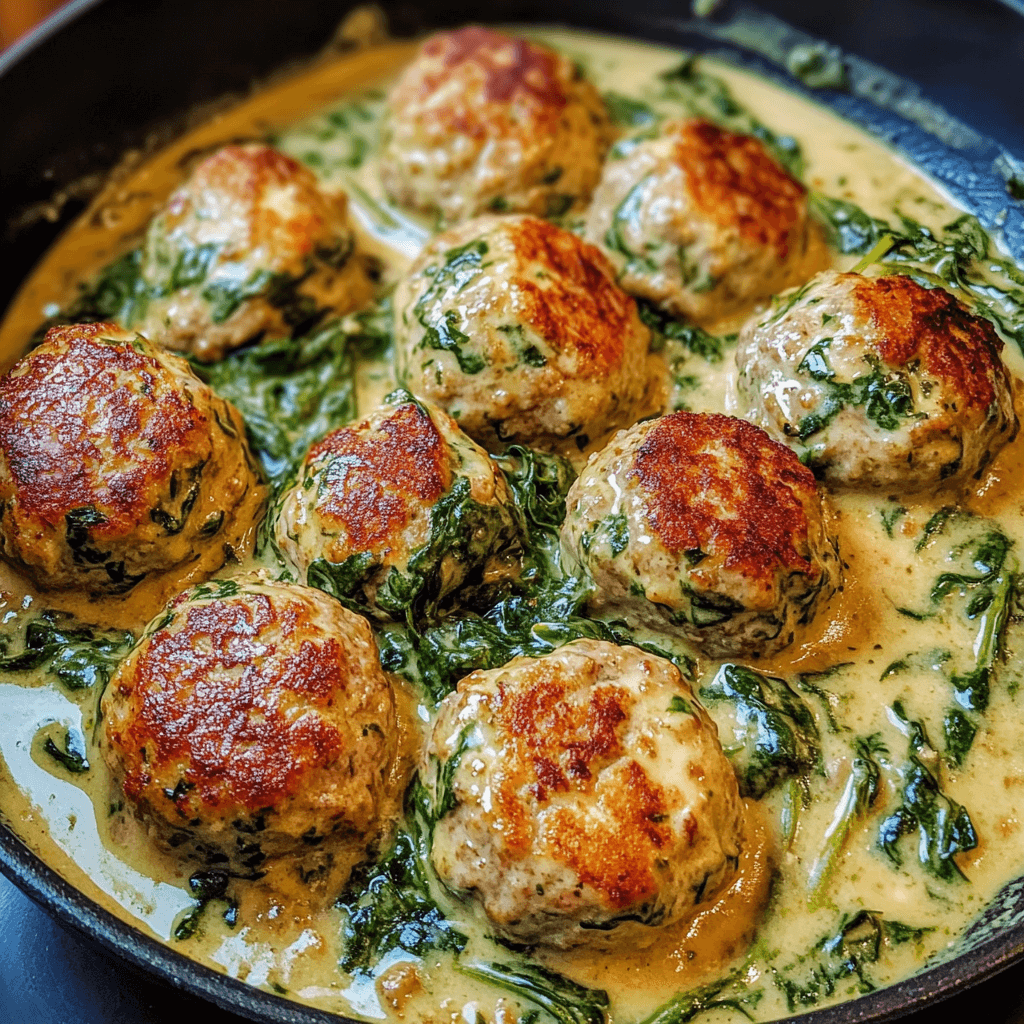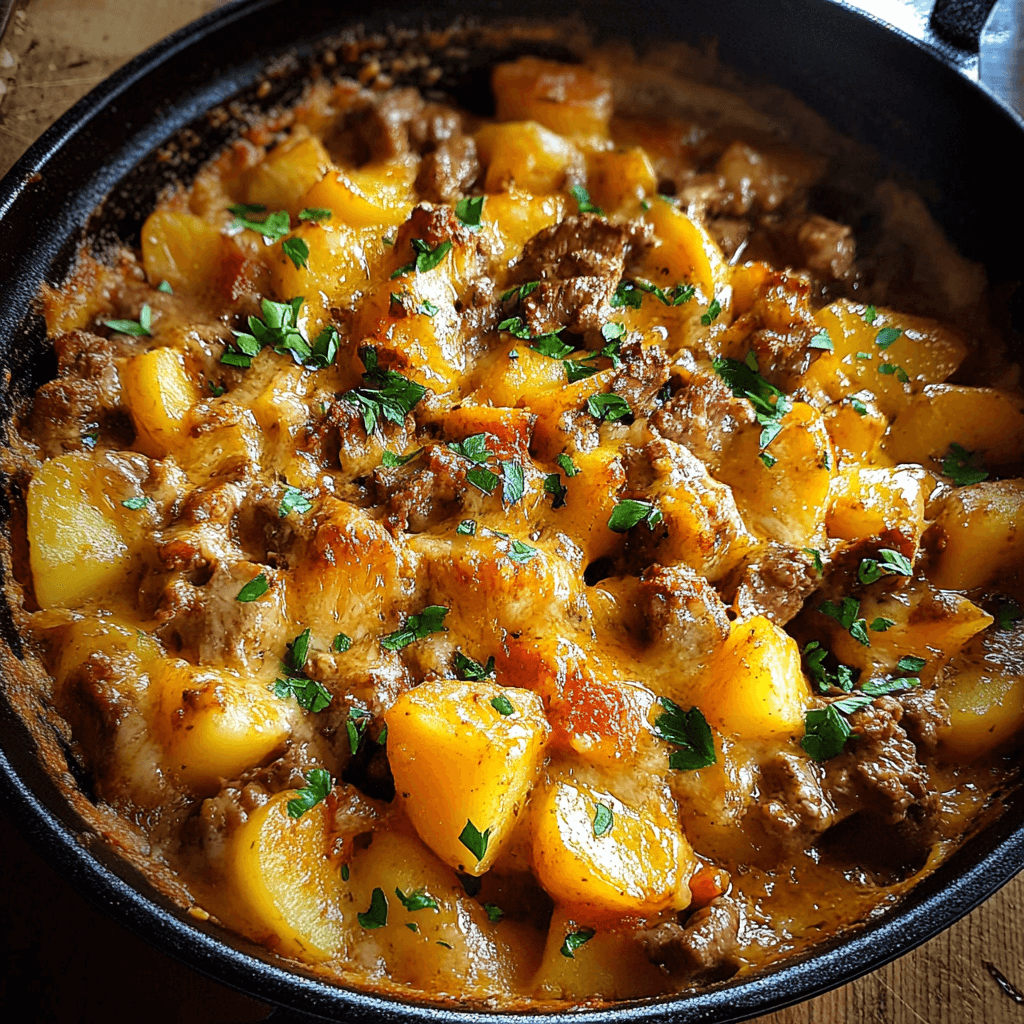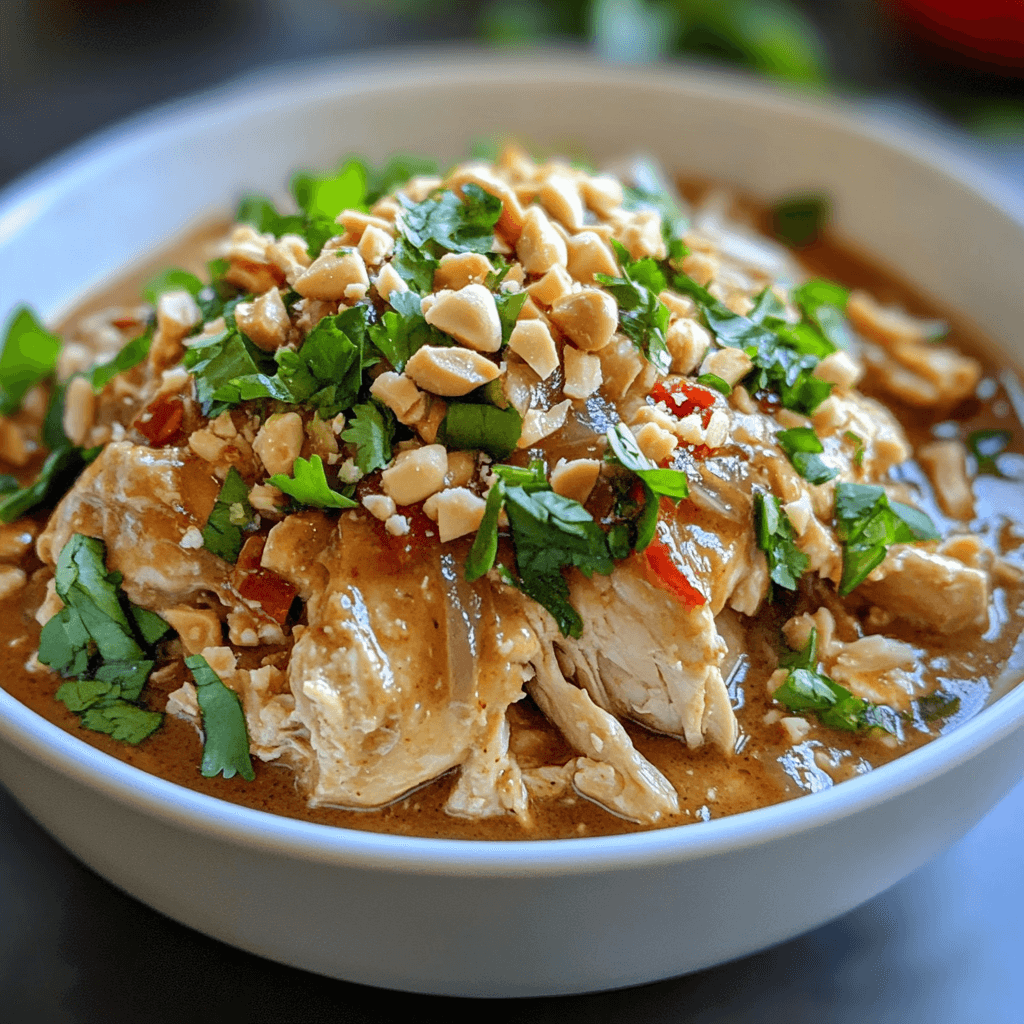Introduction to Arroz Caldoso
Arroz Caldoso, or soupy rice, is a dish that carries the warmth of the Spanish sun within its brothy rice grains and the soulful flavors of its rustic roots. This dish, a less famous cousin of the paella, is a comfort food that is both hearty and elegant. Originating from the sunny lands of Spain, Arroz Caldoso has warmed the hearts and homes of families for generations.
Imagine sitting at a weathered wooden table, the salty sea breeze teasing your senses, as a terracotta bowl filled with Arroz Caldoso is set before you. The steam rises, carrying with it the scent of saffron, paprika, and the oceanic essence of fresh seafood. It’s more than a meal; it’s a culinary journey to the coasts of Spain.
With this article, you are not just reading a recipe; you are becoming part of a tradition that spans centuries. Each spoonful tells a story of coastal feasts, family gatherings, and the simplicity of Spanish cuisine. It’s time to delve into the world of Arroz Caldoso, learn its secrets, and bring the vibrancy of Spain into your kitchen.
Arroz Caldoso Recipe
As the cornerstone of our article, the Arroz Caldoso recipe represents the quintessence of Spanish home cooking. With each step, you’ll learn how to blend simple ingredients to create a symphony of flavors that speak of comfort and tradition. Whether it’s a weeknight dinner or a special occasion, this recipe is sure to impress.
We’ll walk you through the process of selecting the right type of rice, creating a broth that sings with depth, and combining elements that create that perfect, soupy consistency. With each paragraph, your confidence will grow, and you’ll be ready to master this classic dish that is at once humble and luxurious.
Now let’s proceed with the creation of a delectable Arroz Caldoso.
Essential Ingredients
To begin our culinary expedition, the right ingredients are paramount. The variety of rice you choose can make or break your Arroz Caldoso. Short-grain varieties like Bomba or Calasparra are the stars of this dish, as they absorb flavors without becoming mushy. The broth, whether vegetable, chicken, or seafood, is the foundation, infusing the rice with every simmer.
Within this section, we’ll outline the necessary components for your Arroz Caldoso and offer insights on how each element contributes to the final, satisfying dish. From the fresh tomatoes that lend a slight acidity to the soft bite of the perfectly cooked rice, we’ll ensure you have the complete list to start your Arroz Caldoso adventure.
Main Ingredients:
- Short-grain rice: The backbone of the dish, it provides the desired texture and soaks up the flavors.
- Fresh seafood or meat: Depending on the region and personal preference, this could range from shrimp and mussels to chicken or rabbit.
- Rich broth: The soul of the dish, a well-made broth elevates Arroz Caldoso to new heights.
- Vegetables: Tomatoes, onions, garlic, and bell peppers not only add color but also impart a depth of flavor.
Optional Add-ins:
Every chef or home cook brings their personal touch to Arroz Caldoso. Some like to sprinkle fresh herbs, while others might add a zing with lemon zest or spicy peppers.
Modern Variations of Arroz Caldoso Recipe
While the traditional Arroz Caldoso remains a classic, contemporary versions celebrate global influences and cater to varied palates.
- Seafood Arroz Caldoso: A medley of the ocean’s bounty, this version boasts shrimp, mussels, clams, and squid, creating a dish that’s both flavorful and visually appealing.
- Vegetarian Arroz Caldoso: A treat for vegetarians, this variation replaces seafood or meat with robust vegetables, ensuring the dish remains hearty and fulfilling.
- Spicy Arroz Caldoso: For those who crave heat, this rendition, infused with spicy peppers or a generous dash of hot sauce, promises a fiery culinary experience.
The Traditional Cooking Method
Spanish Arroz Caldoso with Shrimp:
Ingredients:
- 12 Jumbo Shrimp, peeled, deveined
- 1/2 Large Red Bell Pepper
- 1/2 Large Green Bell Pepper
- 3 cloves Garlic
- 1/2 Onion
- 1/4 cup Extra-Virgin Olive Oil
- 1/2 tsp Spanish Smoked Sweet Paprika
- 1/2 cup Canned Tomato Purée
- 1 cup Spanish Rice
- 1/2 tsp Saffron Threads
- 4 cups Fish Broth
- Sea Salt and Freshly Ground Black Pepper to taste
Cooking Instructions:
- Preparation: Pat the Jumbo Shrimp dry with a paper towel and season with Sea Salt and Freshly Ground Black Pepper.
- Vegetable Prep: Roughly dice the Red and Green Bell Peppers. Finely mince the Garlic and dice the Onion.
- Sautéing: Heat a semi-deep frying pan over medium heat and add Extra-Virgin Olive Oil. After 2 minutes, add the onion and garlic. Mix with the oil and cook for 3 minutes. Then, add the red and green bell pepper and stir to mix. Cook for another 4 minutes.
- Adding Spices: Add Spanish Smoked Sweet Paprika and season with Sea Salt and Freshly Ground Black Pepper. Mix, then add Canned Tomato Purée. Season again with Sea Salt and mix together until well combined. Cook for 1 minute.
- Rice: Add the Spanish Rice. Pinch in Saffron Threads and stir, cooking the rice for 2 minutes.
- Broth: Add Fish Broth and gently mix everything together. Cook for 15 minutes. While this is cooking, you can mix the rice occasionally.
- Shrimp: Add the shrimp into the pan and give it a quick stir. After 3 to 5 minutes, the rice should be perfectly cooked, leaving enough broth to make this dish kind of a soup-rice, but not a soup entirely.
- Serving: Remove from the heat and serve in flat bowls.
This dish is loaded with flavors from a savory broth, luxurious saffron, and some sweet paprika. It’s the perfect rice dish to enjoy on a cold winter’s day, especially for a Sunday lunch.
For a more detailed recipe and video tutorial, you can visit the original recipe link.
Tips for the Perfect Arroz Caldoso
Achieving perfection in Arroz Caldoso is an art, and here are some expert tips to guide you.
-
Choosing the Right Rice:
The choice of rice can make or break the dish. A short-grain variety, known for its absorbent nature, is ideal. It soaks up the broth and flavors, becoming tender and delicious.
-
The Importance of Broth:
A good broth is like liquid gold. Whether you opt for fish or chicken, ensure it’s rich, seasoned well, and made from fresh ingredients. A flavorful broth not only enhances the taste but also gives the dish its characteristic brothy consistency.
-
Cooking Time and Consistency:
Patience is key. Arroz Caldoso should simmer gently, allowing the rice to cook to perfection. The aim is to achieve a dish that’s brothy yet not too watery. Monitoring the cooking time and adjusting the broth quantity can help strike the right balance.
Serving Suggestions for Arroz Caldoso
Presentation matters. When serving Arroz Caldoso, consider the accompaniments.
- Traditional Accompaniments:
A slice of crusty bread, toasted to perfection, and a fresh salad with seasonal vegetables can elevate the dining experience.
- Modern Pairings:
For those looking to experiment, a chilled glass of white wine or a frothy beer can complement the rich flavors of Arroz Caldoso, making it a meal to remember.
Health Benefits of Arroz Caldoso
Arroz Caldo is a delicious Filipino comfort food that’s essentially a rice porridge or congee made with glutinous rice, chicken, and a generous amount of ginger. It often includes ingredients like garlic, onions, and sometimes saffron. It’s commonly enjoyed with calamansi (a citrus fruit native to the Philippines) or a dash of fish sauce.
Potential Health Benefits:
- Hydration: Arroz caldo has a high water content, which can help maintain proper hydration levels, especially when feeling sick or dehydrated.
- Digestion: Being a soft and easily digestible dish, it can be beneficial for those with digestive issues or recovering from an illness.
- Immunity Boost: Ginger, a key ingredient, is known for its anti-inflammatory and antioxidant properties, which can strengthen the immune system.
- Flu and Cold Relief: The warm qualities of arroz caldo can provide relief from cold or flu symptoms.
- Energy Source: Being rice-based, it’s rich in carbohydrates, providing a quick energy boost.
- Muscle Repair: The chicken in arroz caldo is a good source of protein, essential for muscle repair and growth.
- Bone Health: Chicken provides minerals like phosphorus and calcium, crucial for bone health.
It’s important to note that while arroz caldo offers many potential health advantages, it should be enjoyed as part of a balanced diet. Also, individual dietary needs and restrictions may vary, so always consult with a healthcare provider if unsure.
People Also Ask:
- What is the main difference between Arroz Caldoso and Paella?
- Arroz Caldoso is more of a soup rice dish, where the rice is swimming in a creamy pool of fish broth, whereas Paella is a dry rice dish.
- Spanish Arroz Caldoso with Shrimp – SideChef
- Can I use other seafood in Arroz Caldoso?
- Yes, the original version of Arroz Caldoso is made with lobster (Arroz Caldoso con Bogavante). You can also add scallops, clams, or other seafood to suit your taste.
- Seafood Rice Recipe (Arroz Caldoso) – Spanish Sabores
- What type of rice is best for Arroz Caldoso?
- It’s essential to use round rice (medium grain rice) in Arroz Caldoso, as it releases enough starch into the broth to give the dish its signature creamy texture.
- Spanish Arroz Caldoso Recipe with Shrimp – YouTube
Storing and Reheating Tips
To enjoy Arroz Caldoso’s flavors even after the day it’s made, proper storage and reheating are crucial.
Refrigeration: When stored in an airtight container, Arroz Caldoso can retain its flavors and freshness for up to 3 days in the refrigerator.
Freezing: For longer storage, consider freezing individual portions. This way, you can have a ready-to-eat meal anytime you crave it. Just remember to thaw it properly before reheating.
Reheating: The best way to reheat Arroz Caldoso is on the stovetop. Add a splash of broth or water to ensure it doesn’t dry out and heat it on a low flame until it’s warmed through.
Arroz Caldoso vs. Other Rice Dishes
The world of rice dishes is vast, and while Arroz Caldoso holds its unique place, it’s interesting to see how it compares to others.
Caldoso vs. Paella: Both hail from Spain, but while Paella is known for its crispy bottom layer called “socarrat”, Arroz Caldoso is celebrated for its brothy consistency.
Arroz Caldoso vs. Risotto: Risotto, an Italian classic, is creamier and often made with Parmesan cheese, giving it a rich taste. Arroz Caldoso, on the other hand, relies on the flavors of its broth and main ingredients.
Personal Experiences with Arroz Caldoso
Every dish has a story, and so does Arroz Caldoso. I remember wandering the streets of Valencia, Spain, when I stumbled upon a quaint eatery. The aroma wafting from the kitchen was irresistible. I ordered Arroz Caldoso, and with the first bite, I was transported to culinary heaven. The flavors, the warmth, and the love with which it was made were evident. Since then, Arroz Caldoso isn’t just a dish for me; it’s a cherished memory.
Frequently Asked Questions about Arroz Caldoso Recipe
Arroz Caldoso, with its rich history and diverse variations, often piques curiosity. Here are some commonly asked questions and their answers.
What’s the ideal consistency for Arroz Caldoso?
The beauty of Arroz Caldoso lies in its brothy texture. It shouldn’t be as thick as a risotto nor as thin as a soup. The rice grains should be tender, having absorbed the flavors of the broth, while still maintaining a soupy consistency.
Can I use other meats besides seafood?
Absolutely! While seafood is a traditional choice, especially in coastal regions, many inland areas of Spain prefer using meats like chicken, rabbit, or even chorizo. The key is to ensure the meat complements the flavors of the broth.
How can I make my Arroz Caldoso more flavorful?
The depth of flavor in Arroz Caldoso comes from the broth and the sofrito (the sautéed mix of onions, garlic, and bell peppers). Using a homemade broth and fresh ingredients for the sofrito can significantly enhance the taste. Additionally, spices like saffron or paprika can add an extra layer of flavor.
Is there a vegetarian version of Arroz Caldoso?
Yes, a vegetarian Arroz Caldoso can be just as delicious. Replace the traditional meat or seafood broth with a rich vegetable broth. You can also add a variety of vegetables like bell peppers, zucchini, and mushrooms to make the dish hearty.
What is the difference between lugaw and arroz caldo?
Lugaw and arroz caldo are both Filipino rice porridges, but they have distinct differences. Lugaw is a basic rice porridge, often served plain or with minimal toppings. Arroz caldo, on the other hand, is a more flavorful version, typically infused with ginger, garlic, and onions, and often includes chicken pieces. The term “arroz caldo” translates to “rice broth,” reflecting its Spanish influence.
What is the difference between arroz caldoso and paella?
Arroz caldoso and paella are both traditional Spanish rice dishes, but they differ in texture and preparation. Arroz caldoso is a brothy rice dish, similar to a soup or stew, and often contains seafood or meat. Paella, on the other hand, is a drier rice dish cooked in a wide, shallow pan, known for its crispy bottom layer called “socarrat.” Paella also showcases a variety of ingredients, from seafood and meats to vegetables, all cooked together.
What is arroz caldo made of?
Arroz caldo is a Filipino rice porridge made primarily of glutinous rice, chicken, ginger, garlic, and onions. It’s seasoned with fish sauce or salt, and often garnished with green onions, fried garlic, hard-boiled eggs, and calamansi (a Filipino citrus fruit) on the side.
What are the benefits of eating arroz caldo?
Eating arroz caldo offers several benefits:
- Nutrition: It provides essential nutrients from its ingredients, such as protein from chicken and carbohydrates from rice.
- Comfort: Arroz caldo is often considered a comfort food, perfect for cold days or when one is feeling under the weather.
- Digestion: Being a soft and easily digestible dish, it’s often recommended for those with digestive issues or recovering from illness.
- Hydration: Its soupy consistency can help with hydration, especially when one has a reduced appetite.
Conclusion
Arroz Caldoso stands as a testament to the rich culinary heritage of Spain. It’s a dish that brings comfort, evokes nostalgia, and offers a burst of flavors with every spoonful. Whether you’re trying it for the first time or have enjoyed it for years, Arroz Caldoso promises a delightful experience. Its versatility, the stories it carries, and the emotions it evokes make it more than just a dish; it’s a journey through the heart of Spanish cuisine.

